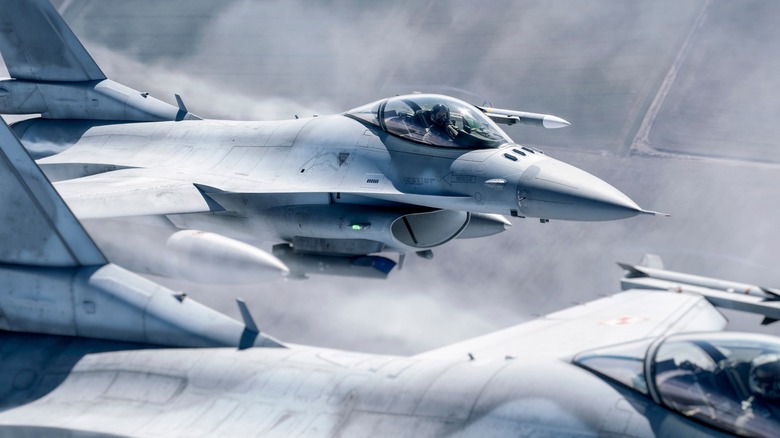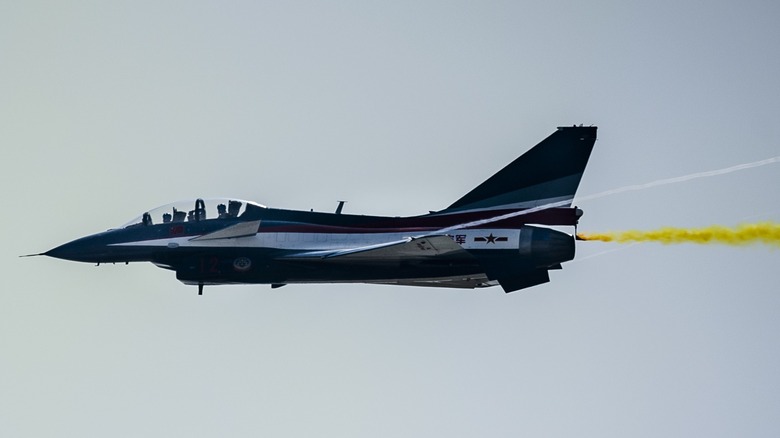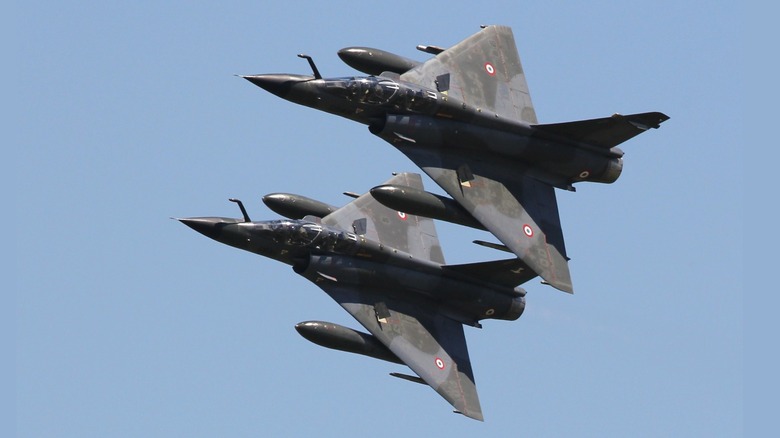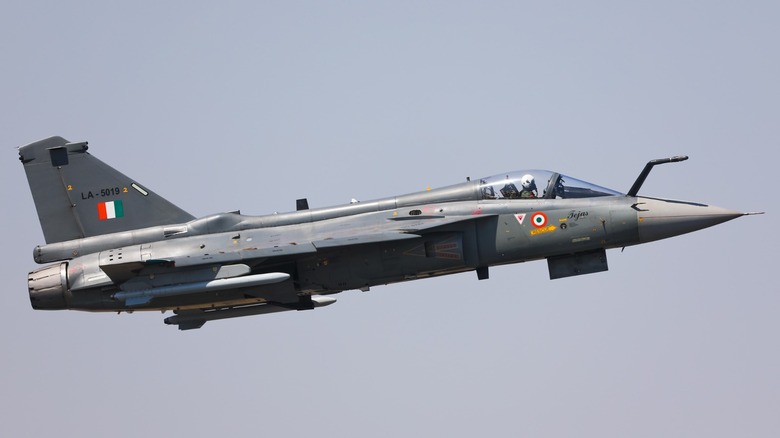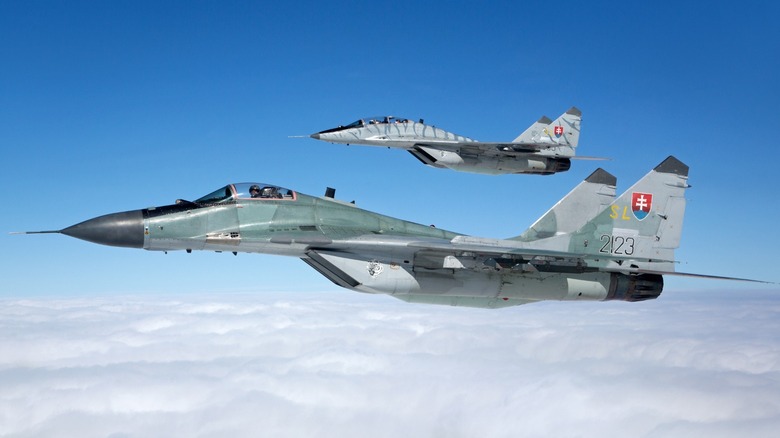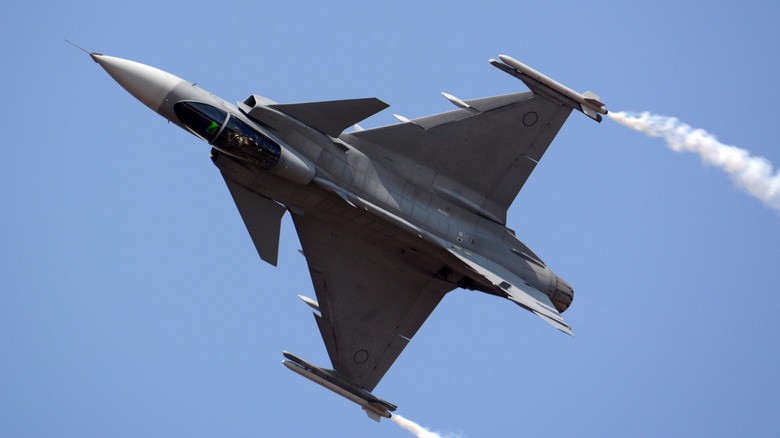5 Fighter Jets That Can Rival The F-16
The Lockheed Martin F-16 Fighting Falcon is one of the most iconic jets ever built. It's also the most popular fighter jet currently in service, with FlightGlobal.com reporting that 2,145 airframes are in service, accounting for 15% of the global fighter fleet.
The jet made its first flight in 1974, meaning the F-16 has been flying for almost 50 years. Despite that, the Fighting Falcon has continuously evolved to meet the needs of its operators and face the challenges of modern-day air forces. Some countries like Bulgaria and the Philippines are even acquiring or planning to buy the latest versions of this venerable multi-role fighter.
However, the F-16 does not have a monopoly on the relatively affordable supersonic multi-role fighter. After all, the U.S. does not sell its jets to potential adversaries like China and Russia — and some of its allies, like France, prefer its own homegrown jets. Furthermore, some neutral countries like Sweden made fighter jets to stay independent from major powers.
Chengdu J-10 Vigorous Dragon
The Chengdu J-10, which first flew in 1998, is a single-engine multi-role fighter with canards and a delta wing design. The Chengdu Aircraft Industry Group manufactures the jet in Chengdu, Sichuan, China. It entered service in 2005 with the Chinese People's Liberation Army Air Force fielding 246 airframes, and their Naval counterparts having 25. The Pakistani Air Force also boasts 18 units of the J-10C variant, with seven more on order.
This jet can fly at up to Mach 1.85 and has a combat range of almost 300 nautical miles, making it ideal for defensive operations. You can also equip it for an extended range with two 212-gallon underwing drop tanks and a 450-gallon fuselage drop tank. Furthermore, the J-10 is also capable of in-flight refueling, thus extending its range indefinitely as long as there is an available tanker in its vicinity.
The J-10's armament includes an internal 23mm twin-barreled cannon, and up to 9,900 pounds of external ordinance mounted across 11 hardpoints. The plane accepts air-to-air missiles, air-to-surface missiles, laser-guided bombs, glide bombs, conventional bombs, and rocket pods, allowing it to conduct many different missions and making it a genuinely multi-role fighter.
Dassault Mirage 2000
Despite being a strong American ally and a key NATO member, France prefers to make its own weapons, including fighter jets. Dassault is one of the key aircraft manufacturers in France, responsible for building great private jets like Taylor Swift's Dassault Falcon and advanced jet fighters like the Dassault Rafale.
Dassault built the Mirage 2000 to replace the aging Mirage III that the French Air Force flew in the 1960s. Like the F-16, the 2000 is a single-engine, single-seat, multi-role fighter. However, it followed the design language of the Mirage III, featuring a delta-wing design that improved flight performance and maneuverability for both low-speed and high-speed applications.
The Mirage 2000 is a supersonic jet that can reach Mach 2.2 and has an 830-nautical-mile combat range. It also has a removable probe that gives it in-flight refueling capability and can also take on a buddy pod, allowing it to refuel fellow Mirage 2000s, negating the need for a dedicated tanker depending on the operation.
This jet has nine hardpoints — two on each wing and five under the fuselage — that can carry air-to-air and air-to-surface missiles. It can also be equipped with laser-guided bombs, anti-radar missiles, anti-ship missiles, rocket launchers, and even stealthy cruise missiles.
Unfortunately, the Mirage 2000 is no longer in production, having since been replaced by the Rafale. Nevertheless, it's still operated by several nations, including Egypt (19), France (97), Greece (29), India (55), Peru (12), Qatar (12), Taiwan (54), and the UAE (59), across several variants.
HAL Tejas
India was one of the biggest operators of the MiG-21, the oldest fighter still in service. However, it sought a replacement for it starting in the 1980s: The Indian government started the Light Combat Aircraft program, which led to the HAL Tejas Light Combat Aircraft (LCA) — a single-engine, multi-role fighter.
The HAL Tejas entered service with the Indian Air Force in 2016, although it made its first flight some 15 years earlier in 2001. Like other aircraft in this list, the jet featured a delta wing design. Furthermore, it can hit Mach 1.8 with a combat range of about 270 nautical miles.
Like its competitors, you can equip the HAL Tejas with various armaments. It features a single twin-barrel 23mm cannon and eight hardpoints for mounting different weapons. The jet can carry air-to-air, air-to-surface, and anti-ship missiles. It can also equip external fuel pods for extended range at the expense of fewer missiles. However, if you do not want to lose firepower, the HAL Tejas can be refueled in-flight, allowing it to hit further targets. India operates 32 examples of the Tejas, with 91 more on order.
Mikoyan MiG-29 Fulcrum
The MiG-29 Fulcrum is a Soviet-made jet developed to counter new American jets like the F-15 and F-16. Research for this aircraft started in the 1970s and culminated with its entry into service in the Soviet Air Force in 1983. The MiG-29 was built alongside the larger Sukhoi Su-27, but because of its smaller size, the Fulcrum was often compared to the Fighting Falcon despite being larger than the F-16.
Although all the other F-16 rivals can fly at Mach speeds, the MiG-29 is among the fastest — reaching Mach 2.25. Its combat range of about 485 nautical miles puts it among the longest-range jets on the list as well, just next to the Mirage 2000. It's also capable of mid-air refueling, extending its range further. However, this jet stands out from all the others because it's the only one with two engines, giving it better reliability and a faster cruise speed.
The MiG-29 multi-role fighter can mount seven weapons via external hardpoints. It can deploy air-to-air missiles, unguided rocket pods, and even ordinary iron bombs. But what makes this a terrifying jet is that it's also thought to carry the RN-40 tactical nuclear weapon.
Despite its age, the MiG-29's newer variants — including the upgraded MiG-35 — are still in production. As of 2024, several nations operate the MiG-29, including Algeria (40), Azerbaijan (15), Bangladesh (8), Belarus (33), Bulgaria (13), Cuba (3), Egypt (43), India (120), Iran (24), Kazakhstan (23), Mongolia (2), Myanmar (33), North Korea (35), Peru (8), Poland (29), Russia (275), Serbia (14), Sudan (11), Syria (29), Turkmenistan (24), Ukraine (55), Uzbekistan (38), and Yemen (23).
Saab JAS 39 Gripen
The Gripen is a Swedish fighter jet that first flew in 1988 and entered service with the Swedes in 1997. It's a single-engine, multi-role fighter that features canards and a delta wing configuration. It is manufactured by Saab, though not the same company that made Saab automobiles.
The JAS 39 Gripen can hit Mach 2.0, making it faster than some of its contemporaries, and has an outstanding 700-nautical-mile combat radius. It's also capable of in-flight refueling via a probe-and-drogue system used by many Air Forces worldwide. It also has an internal 27mm cannon and 10 hardpoints for carrying various armaments. The Gripen can carry air-to-air, air-to-surface, and guided bombs, allowing it to deploy for multiple roles and missions.
Many nations operate the Gripen and its variants, including Brazil (6), the Czech Republic (14), Hungary (14), South Africa (3), Sweden (94), and Thailand (11). The Philippines is also considering the Gripen for its Air Force.
